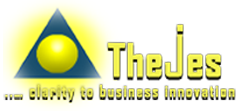The concept of Change Management describes a structured approach to transitions in individuals, teams, organizations and societies that moves the target from a current state to a desired state. Stated simply, change management is a process for managing the people-side of change. The most recent research points to a combination of organizational change management tools and individual change management models for effective change to take place.
Theories of Change
The evolution of the change management field stems from psychology, business and engineering. Hence, some models are derived from an organizational development perspective whereas others are based on individual behavioral models. For this reason, this section is divided into two sub-categories: Individual Change Management and Organizational Change Management. Understanding of individual and organizational change theory is necessary to implement effective change management processes and tools.
Individual Change Management
An early model of change developed by Kurt Lewin described change as a three-stage process. The first stage he called “unfreezing”. It involved overcoming inertia and dismantling the existing “mind set”. Defense mechanisms have to be bypassed. In the second stage the change occurs. This is typically a period of confusion and transition. We are aware that the old ways are being challenged but we do not have a clear picture to replace them with yet. The third and final stage he called “refreezing”. The new mindset is crystallizing and one’s comfort level is returning to previous levels.
Some change theories are based on derivatives of the Kübler-Ross model from Elizabeth Kubler-Ross’s book, “On Death and Dying”. The stages of Kubler-Ross’s model describe the personal and emotional states that a person typically encounters when dealing with loss of a loved one. Derivatives of her model applied in other settings such as the workplace show that similar emotional states are encountered as individuals are confronted with change.
A Formula for Change was developed by Richard Beckhard and David Gleicher and is sometimes referred to as Gleicher’s Formula. The Formula illustrates that the combination of organisational dissatisfaction, vision for the future and the possibility of immediate, tactical action must be stronger than the resistance within the organisation in order for meaningful changes to occur.
The ADKAR model for individual change management was developed by Prosci with input from more than 1000 organizations from 59 countries. This model describes five required building blocks for change to be realized successfully on an individual level.
The building blocks of the ADKAR Model include:
-
- Awareness – of why the change is needed
- Desire – to support and participate in the change
- Knowledge – of how to change
- Ability – to implement new skills and behaviors
- Reinforcement – to sustain the change
- Organizational Change Management
Organizational change management includes processes and tools for managing the people side of the change at an organizational level. These tools include a structured approach that can be used to effectively transition groups or organizations through change. When combined with an understanding of individual change management, these tools provide a framework for managing the people side of change.


